Just because mezcal is served in a shot glass does not mean you should shoot it. Consider this a public service announcement from your correspondent, who has only himself to blame. True, I may have to rethink the intentions of a Mexican pal who watched me knock back shots of Oaxacan firewater last night as he took delicate hummingbird sips. At least, I tell myself, I did not eat the worm.
We had finished our feast at a no-name restaurant in the city center, my friend and I, stopping afterward at a bar specializing in the fermented agave liquor. Both of us were already happy by then, although not in the liquored-up sense.
It occurs to me now that my spirits are always uncommonly elevated in Mexico City, a place I began visiting with my family while still in my teens. Recently I have begun returning on a regular basis, drawn to this tumultuous and paradoxical city (it is also often tragic: after my most recent visit a powerful earthquake decimated swaths of it, leaving more than 200 dead) for reasons reducible to two elements: food and art. For a week in April, I set myself an ambitious program there of satisfying both belly and eye, alternating art consumption with meals at the dining spots where a generation of Mexican chefs is elbowing its way onto the global culinary scene.
I have an unusual advantage. Buzzy and overpopulated Mexico City may be, but during the days between Palm Sunday and Easter large numbers of its 22 million inhabitants decamp and the city hangs out a vacancy sign. As if at a stroke, the capital’s paralyzing traffic vanishes, the frenetic pace of street life slackens, hotel rates plummet. Suddenly, getting an 8:30 dinner reservation at hot restaurants is no big deal.
For information on traveling to this locale and or additional information on this or any other article please contact us
here. Or call tel: +1. 305.445.7791
For my initial night in town a hotelier friend suggests dinner at a spot exemplifying why the foodie press has flocked to Mexico City lately. With only seven tables, Sofia Garcia Osorio’s unnamed place (“What’s important is you and the experience, not the restaurant or me,” she says) can accommodate 28 diners at a time. Located on a sketchy side street near the Paseo de la Reforma—the broad avenue diagonally bisecting the city—this restaurant offers hopeful evidence that Mexico City’s faded center is making a much-touted and overdue comeback.
Despite its location between a defunct theater and a convenience store, Ms. Garcia Osorio’s place draws a stream of patrons from throughout the city. That many are unlikely to have set foot downtown before speaks to the contradictory nature of a city where wealth disparity often verges on the grotesque, the cheapness of human life colors daily existence with a hard brilliance, and the solemn beauty of a deep and ancient culture is largely obscured by the noisy soap opera of Mexico’s perennially corrupt politics.
As if in response to her country’s complexities, Garcia Osorio likes to keep things simple at her restaurant, turning out densely flavorful meals using the most basic of ingredients and means.
“Real food doesn’t need a lot of adornment,” she tells me by phone after my visit. “I don’t like menus that say, ‘Oh, this is a plate with blah-blah- blah.’ We try to leave out the explanation and let the flavor speak for itself.”
Cooking in cast-iron or clay comal pans and, where possible, without oil, Garcia Osorio renders subtle fare, like a moist organic saddle of rabbit in a smoky peanut mole, or a guacamole studded with nuggets of green tomato, frills of pipicha, and a mysterious ingredient that pops on the tongue like a piece of Freshen-up gum.
“What is that?” I ask my companion, as we duel for the dip with homemade tostadas.
“Oh, that?” he asks, nonchalantly shoveling in a bite. “Toasted grasshoppers.”

Lalo – Mexico City
Class Insecta is, of course, the latest frontier of culinary exploration, and yet Mexican cuisine has exploited it for a millennium. Exactly how common and essential insects are to traditional cooking in this ancient capital becomes clear to me a few days after my inaugural meal, when I wake one groggy dawn at midweek to join the chef Eduardo “Lalo” García on a trip to the vast wholesale food market called La Merced.

Lalo – Mexico City
It was at La Merced that Lalo, whom many consider the best chef in the country, found his culinary purpose and soul. As a child of undocumented migrant workers, Lalo spent much of his childhood trailing his parents around the United States picking: citrus in Florida, Vidalia onions in Georgia, blueberries in Michigan, wild mushrooms on cold Pennsylvania nights. Finding stable work as a kitchen grunt in his teen years, Lalo’s work ethic and talent quickly attracted the attention of a series of mentors, who propelled him on an upward trajectory from dishwasher to busboy and eventually to garde-manger at Atlanta’s high-end Brasserie Le Coze.
Very likely he’d have remained in his adopted country had the United States government not sent him packing a decade or so ago. Deported to Mexico, he settled in the capital, working for several years before opening, first, the casual but refined Máximo Bistrot Local, then the French-inflected Havre 77, and finally a lively breakfast spot called Lalo!, famous for its chilaquiles, a sure-fire hangover cure.
Now, in the chilly lightless morning, I wait outside Máximo Bistrot Local for Lalo to saunter down the street from his nearby apartment, unlock his beat-up sedan, and drive us through the dark to the city’s eastern perimeter and a place less like a market than like a far-off galaxy.
At La Merced vast sheds covering hundreds of acres are crammed with every imaginable foodstuff . Here you can find countless types of chili; an entire pigskin deep-fried in a drum; buckets of grasshoppers sorted and alive or toasted and priced according to terroir. As many varieties of foods as there are at La Merced, there are at least that many overlapping realities. Nopal vendors, for instance, occupy a sector also favored by round-the-clock prostitutes. Shaving spines off cactus with the speed of magicians, the merchants stack the paddles, resembling lazy green tongues, into piles. Guys specializing in wild foraging reach under their tables as Lalo approaches, drawing out plastic-wrapped blister trays of mushrooms as furtively as if they were selling contraband and not chanterelles.
Fast-moving Lalo is easy to lose in the dim, crowded aisles, and so I trot behind him trying not to slosh the steaming café de olla he bought me all over myself. Processing through a lane seemingly upholstered with yellow squash blossoms, we arrive at an area where zucchini are piled high in baskets sorted by size. Each bears a hand-lettered sign raunchily advertising the seller’s wares. Later, in the car heading back to my hotel, Lalo and I debate which was choicest.
My favorite, I say, was a sign that read, in Spanish: how ya like my big one, sluts? Lalo, thoughtful, pauses and says: “I kind of liked the one that said, sit on this!”
Back by seven o’clock, I grab a catnap and a bite of breakfast before trekking the short distance through Chapultepec Park to the Museo Nacional de Antropología in time to be there before its doors are unlocked. Said to be the most visited museum in Mexico, this monumental structure opened in 1964 and was designed by a team led by the architect Pedro Ramírez Vázquez. It is certainly the most visited by me. No matter how often I experience it, the freshness of Vázquez’s conception never stales: Its regionally organized collections are displayed in themed exhibition halls, which surround an open-air courtyard shaded by an immense concrete umbrella fountain that rains down on the plaza and refreshes the air. Despite the hordes that reliably descend on the place, it is pretty easy to find an empty gallery—as I do today, bypassing halls dedicated to the death-obsessed Aztecs for another dedicated to the enigmatic peoples of Mexico’s eastern coast.
If little is known with certainty about the Olmecs, there is less still to ratify the origins of a small sculpture I’ve come to see, hardly more than a knick-knack compared with the colossal basalt heads that are the postcard of Olmec artistic achievement, and yet monumental despite its modest scale.
Dynamic, sexy, curiously depicted in a seated position, the sculpture was supposedly discovered in 1933 by a farmer near the Uxpanapa River in the state of Veracruz and is known as The Wrestler, though it might just as plausibly represent a ballplayer or a shaman or even a god.
That some skeptics insist it is a 20th-century fake improves my opinion of it, since like so much else in Mexican art and politics and literature and culture The Wrestler invites and equally resists interpretation. This truth in turn underscores a conclusion I arrived at long ago about this country: If you are not at home with paradox, Mexico is not the place for you.

Museo Jumex
Leaving the anthropology museum, I dart across the Paseo de la Reforma to another section of Chapultepec Park to tick off my next agenda item: the Museo de Arte Moderno’s “Monstruosismos” exhibit, which examines the prevalent duality of beauty and monstrosity in Mexican art. In a typical demonstration of Mexico City’s embarrassment of artistic riches, two other fine subsidiary exhibitions (on Sigmar Polke and Jean Arp) are running concurrently at the museum. I whip through the Polke and skip the Arp because I’ve got other stops to make—at the Museo Jumex ’s sawtooth David Chipperfield building; at a “contemporary art church” run by the creative art collective Biquini Wax; at the Museo Tamayo ’s installation of cloud paintings by the British artist Tacita Dean, works whose imagery was inspired by the skies over Los Angeles (a city that, it seems worth remembering, was once part of Mexico).

Museo- Tamayo
For information on traveling to this locale and or additional information on this or any other article please contact us
here. Or call tel: +1. 305.445.7791
Also, there is lunch.
During any other week the ride from my hotel in tony Polanco to the working-class Azcapotzalco neighborhood would take an hour. Now I’m whisked there in 20 minutes by one of the city’s cheap and plentiful Ubers, deposited in front of an unpromising squat storefront whose windows are covered with black-out shades.
Founded in 1957 by María Elena Lugo Zermeño, Nicos is a durable institution rediscovered in recent years by both local chefs and the ever-adventurous Japanese. Just over a decade ago its kitchen was taken over by the owner’s son Gerardo Vázquez Lugo, who, though he refreshed the menu to embrace Slow Food precepts, left largely unaltered the recipes of his mother’s solid and deeply traditional homemade fare.
The unfussy atmosphere of Nicos seems almost as time arrested. The white-shirted waiters are methodical and brisk, powering rolling carts to tableside, where they toss Caesar salads or sauté dishes like the one I’d come seeking—escamoles, or Aztec caviar.
These edible ant larvae, harvested from beneath the roots of the maguey cactus, have been considered a delicacy since pre-Hispanic times; references to them appear in the Florentine Codex, a compendious 16th-century ethnographic treatise on Mesoamerica by a Spanish Franciscan friar, who omitted mention of their crunchy texture and nutty flavor, a taste greatly magnified when escamoles are pan-fried in quantities of butter sufficient to stop your heart.
Paying up at the cashier, I summon another Uber for a quick dash to the historic center, my destination the 16th-century Antiguo Colegio de San Ildefonso.
This austere stone complex constructed by the Jesuits is often said to be the birthplace of the Mexican muralism movement. Yet it isn’t priests or painters I think of on my visit but a famous urbanist who once remarked of old buildings that what they need are new uses.
Repurposed in the 1990s as an arts and cultural center, San Ildefonso is a testament to that notion. And few places seem more conducive to the display of contemporary art than this structure, whose arcaded cloisters and bare vaulted chapels make it a particularly suitable backdrop for the German photographer Candida Höfer’s portraits of landmark buildings throughout Mexico, monumental images that strike me as almost more metaphysical than architectural depictions, portals to other worlds.
After an hour here I walk into the bright sun and make for the nearby zócalo and the city’s main cathedral, where bell ringers are chiming the hour. It is Maundy Thursday. After today, the city begins in earnest to pull down its shutters, a fact I accounted for in my planning by booking into a hotel that has elements about it of a museum gallery.

Camino Real Polanco México
Critics snipe that the Camino Real Polanco México has degenerated over the decades into a soulless convention and business-travel factory. And at over 700 rooms it is hard to discount this complaint. Yet, especially during Holy Week, this elegant resort hotel—designed in a Mexican vernacular style by Ricardo Legorreta and opened in time for the 1968 Olympics—again becomes the civilized oasis I remember from when I was young.
The excitement has hardly faded from those days of turning off Calzada General Mariano Escobedo and passing through an opening in a large magenta screen wall sculptured by the German-Mexican artist Mathias Goeritz, into a forecourt centering on Isamu Noguchi’s roiling “eternal movement” fountain. And while some of the important art commissioned when the Camino Real was first built was sold off when the hotel changed owners in 2000, a great deal remains.

Camino Real Polanco México
Gone is Alexander Calder’s untitled abstract spider, auctioned at Christie’s New York for $5,831,500 in 2003. But Rufino Tamayo’s wall-size mural Man Facing Infinity remains, as do Goeritz’s masterful Abstract in Gold and Pedro Friedeberg’s wackadoodle 16 Riddles of a Hindu Astronaut.
Freed from any further ambitions, I spend my penultimate day in the city reading on the balcony of a suite overlooking the pool and walled garden, my only venture off property being lunch at a restaurant I’d never have gotten into at any other time.

Pujol Restaurant – Mexico City
The place is Pujol, of course, the most celebrated restaurant in Mexico City, and newly reopened on a residential side street in nearby Polanco. It was almost a year ago that the chef, Enrique Olvera, abruptly shuttered its predecessor after 17 years, deciding the time had come for a shift in philosophy and change of address.
The white-tablecloth primness of the old Pujol had come to feel out of step for a chef who wanted a new canvas for presenting what the New York Times termed his “playfully elevated street food.” “I realized with Cosme that I like restaurants that are fun,’’ Mr. Olvera said, referring to his popular spot in New York’s Flatiron District. To that end he commissioned the architect Javier Sánchez to design an airy and low-slung bungalow and set it behind a perimeter fence and garden. If Sánchez’s mellow design evokes Southern California as much as it refers to the complex city that surrounds it, the kitchen leaves no question as to where you are.

Pujol Restaurant – Mexico City
Food at Pujol is prepared in a kitchen with no burners or sauté pans, most dishes seared on a wood grill and finished in an oven to preserve the familiarly Mexican savor of smoke. Tortillas are toasted on a comal. A brick oven pit is used for slow-cooked preparations, like the fork-tender lamb barbacoa served as part of a course on what Mr. Olvera terms a taco omakase menu.
Taking my place alongside some regulars at an 11-seat counter, I sit back for a meal that arrives— sushi-bar style—in successive courses, with dishes presented so briskly I barely manage to scratch out notes on what I’ve been served.
There is a Lilliputian ear of corn slathered in coffee mayonnaise and dusted with powdered chicatana ants. There are infladitas, pulled corn tortillas with caviar and crème fraîche. There is a mini-tlayuda, or Oaxacan masa cake served with refritos, white Oaxacan cheese, and herbs. There is a taco of raw sea bass on a corn tortilla drizzled with a puree of cilantro, jalapeño, ginger, and xpelon beans. There are tacos of pork belly, of waygu beef, of barbecued lamb.
“I recommend you take a little taste of every sauce first to see how much you can handle,” says a friendly server whose elaborate mane of dreads is caught up in a bright bandanna. Along the same lines, she improvises a drink pairing for each course, beginning with a can of Tecate served with a wedge of lime.
The meal ranges on for hours, and the drinks keep coming: a Chenin blanc, a xoconoxtle margarita, a tamarind agua fresca garnished with a salt of ground maguey worms, a garnet Palo Cortado sherry, and a red wine whose label I forget.
I am wiser by now and limit myself to judicious sips. When offered a generous pour of a 12-year-old mezcal by the server, I mention my recent firewater mishap and ask for the check.
“Mezcal,” I say as I pay up, “is a mistake you only make once.”
GUY TREBAY


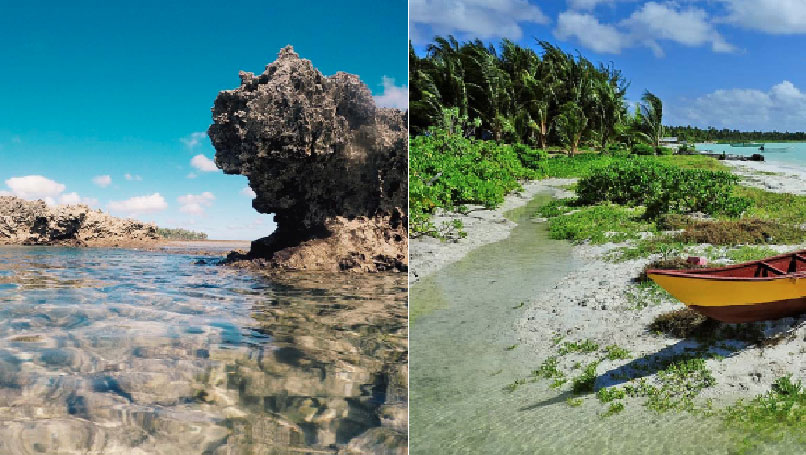
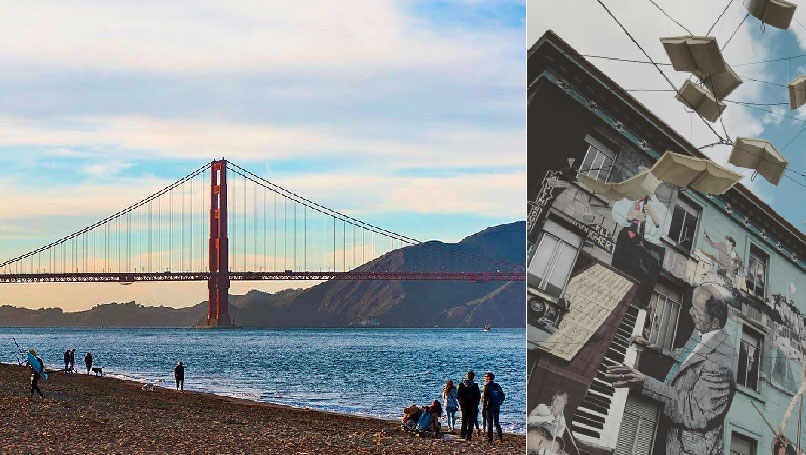

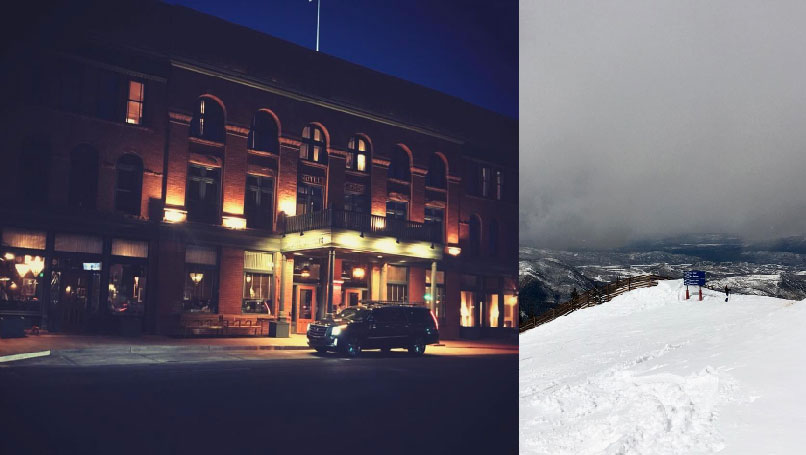


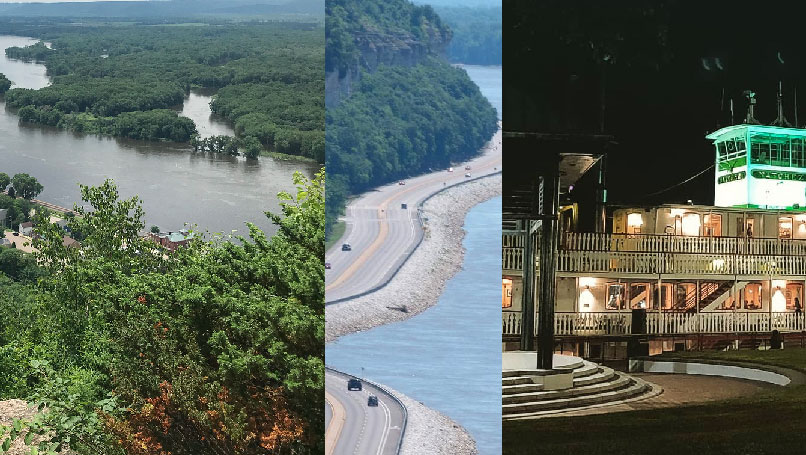

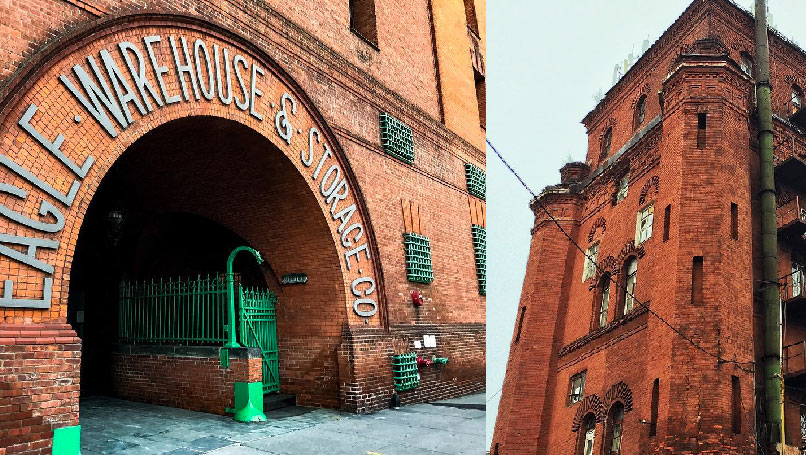

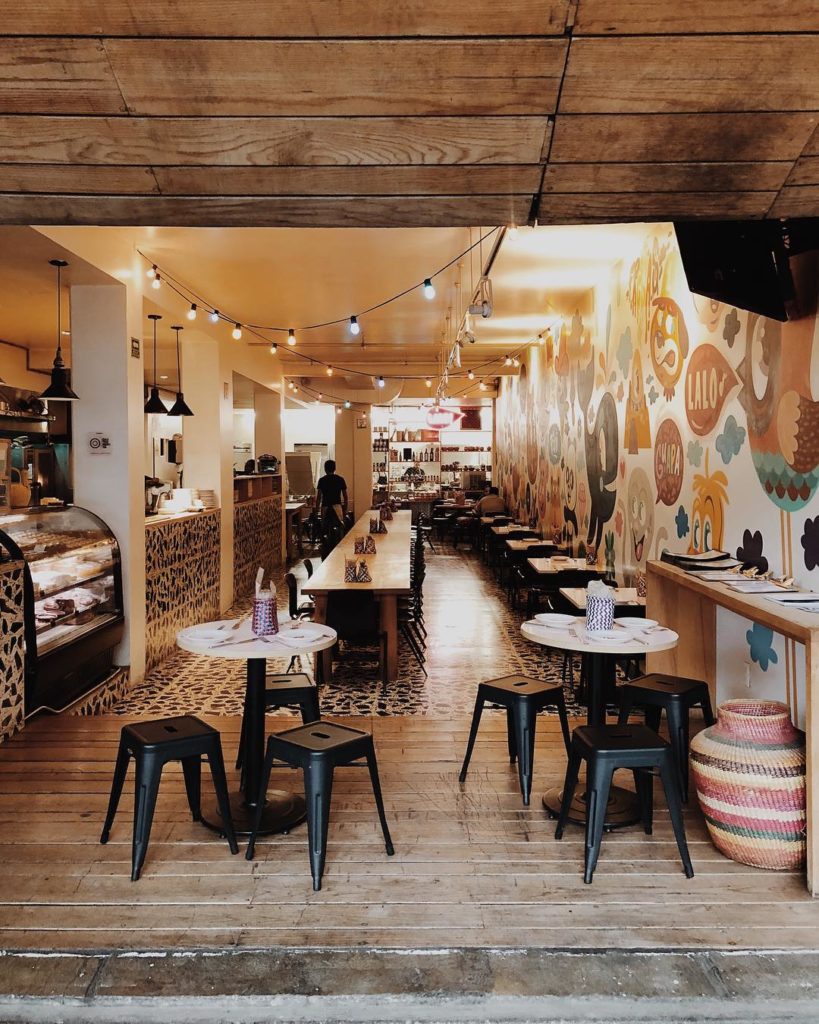





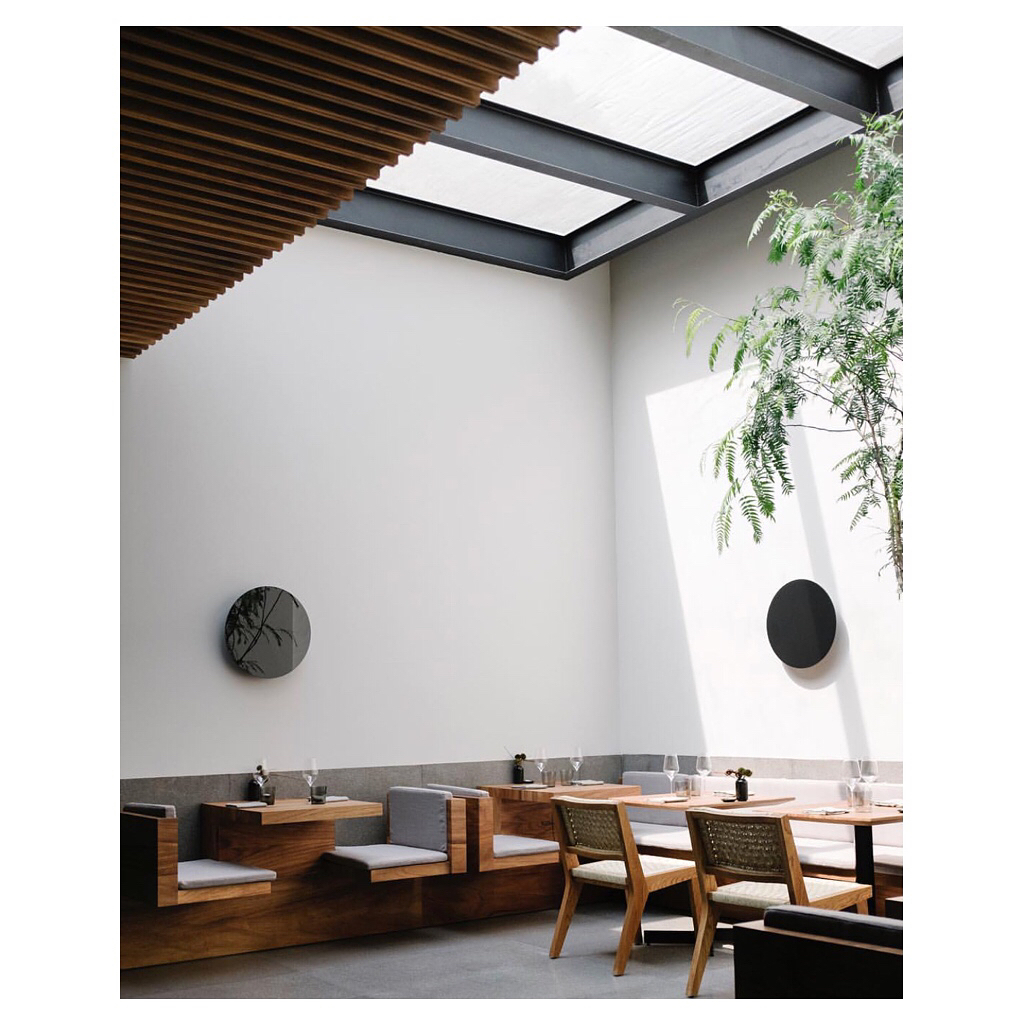
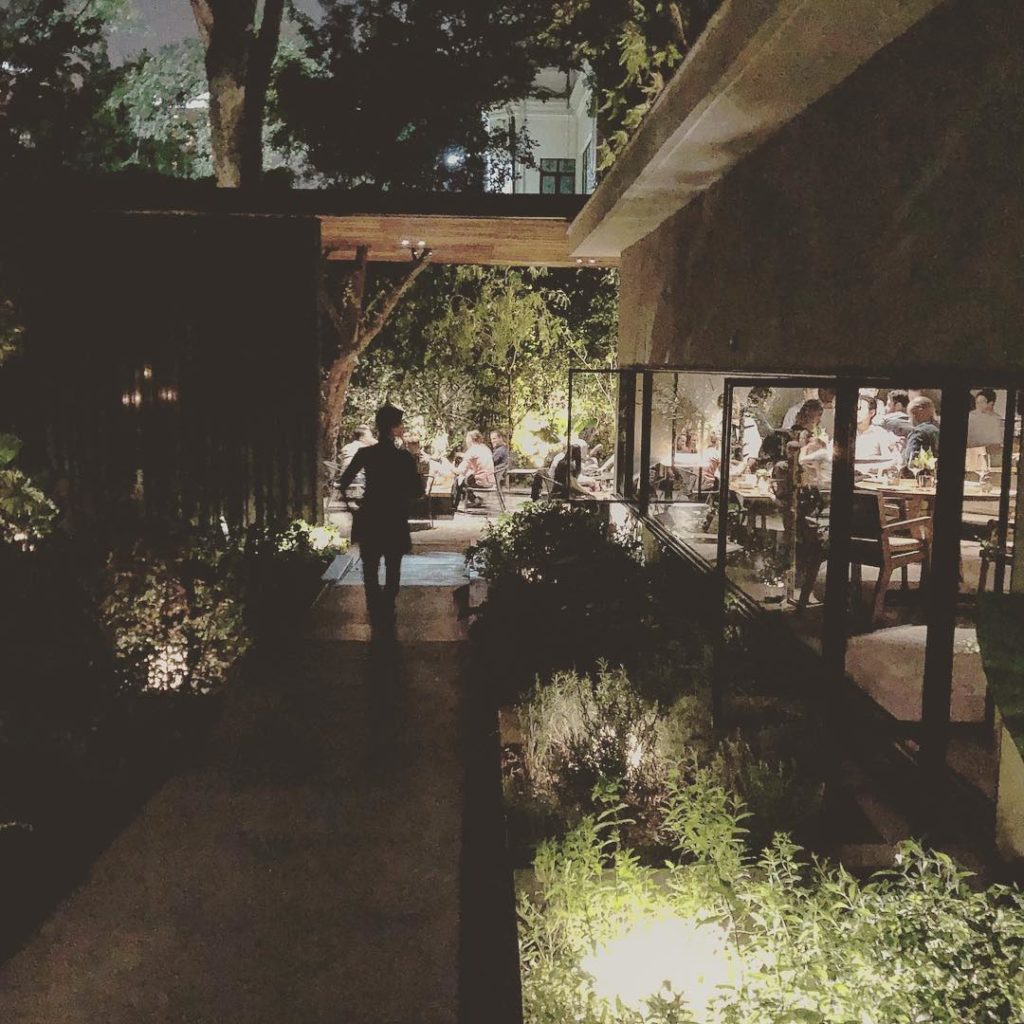
 The landscape of the Azores may be reminiscent of the British Isles but the architecture is all #Portugal.
The landscape of the Azores may be reminiscent of the British Isles but the architecture is all #Portugal.